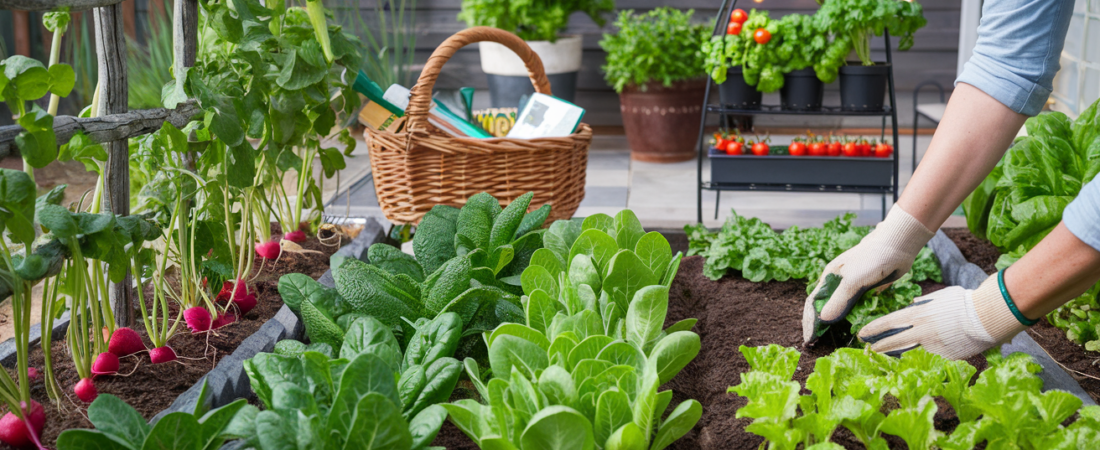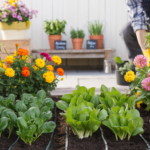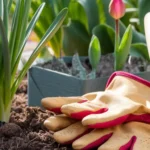Spring is here, and I can’t stop smiling! You know that thrill when you see your first green sprout or finally get those seeds into the soil? That’s what spring gardening is all about. There’s something so rewarding about turning a bare patch of dirt—or even a few pots—into a lush, thriving spring vegetable garden.
But here’s the thing: timing matters. Plant too soon, and you might lose your veggies to frost. Wait too long, and you could miss out on the best growing window. Sound familiar? Don’t worry. I’ve got you covered with this planting guide for vegetables that’ll make spring gardening easy and so much fun. We’ll talk about what to plant in April, how to start garden seeds indoors, and even tips for growing veggies in small spaces. Let’s dig in—literally!
Timing Is Everything: When to Plant Vegetables in Spring
Let’s talk timing. If you’re wondering when to plant vegetables, the answer depends on your region. For most of us, March and April are the sweet spots for cool-season crops like spinach, kale, and peas. These veggies love the cooler soil temps and will reward you with quick, satisfying growth.
In warmer climates like South Texas gardening, you can already get started with warm-weather favorites like tomatoes, peppers, and cucumbers. If you’re in a cooler zone, like Zone 7, it’s time to start those heat-loving veggies indoors. This gives them a head start, so they’re strong and ready to transplant once the last frost is gone.

Vegetables to Grow in Spring
If you’re looking for fast-growing, reliable crops, start with leafy greens like spinach, arugula, and romaine lettuce. They grow quickly and are perfect for beginners. Want to mix it up? Try colorful options like rainbow chard or purple kale—they’re delicious and make your garden look stunning.
Root vegetables like radishes, carrots, and beets are also fantastic choices for your spring vegetable garden. Not only are they easy to grow, but they’ll give you the satisfaction of pulling fresh, crunchy produce straight from the earth.
Pro tip: Stagger your planting! Sow seeds every two weeks to keep the harvest coming all season long.

Starting Garden Seeds Indoors
Starting seeds indoors might just be my favorite part of gardening. It’s like you’re nurturing tiny miracles that will eventually grow into big, productive plants. For heat-loving vegetables like tomatoes, peppers, and eggplants, this is a must—especially if you live in a region with late frosts.
You don’t need a fancy setup, either. Grab some seed trays, fill them with light, fluffy soil, and plant your seeds at the depth suggested on the packet. Keep the soil moist (not soggy), and place your trays in a sunny window or under grow lights. Before you know it, you’ll see those tiny green sprouts pushing their way up—total magic!

Growing Vegetables in Pots
No garden bed? No problem. You can grow a ton of spring garden vegetables in pots! Herbs like basil, cilantro, and dill thrive in containers, as do veggies like cherry tomatoes, peppers, and lettuce. Bonus: growing veggies in pots is super convenient for small spaces like patios or balconies.
Make sure your pots have good drainage and are filled with nutrient-rich soil. Place them in a sunny spot, and water consistently. Want to maximize your space? Use vertical gardening tools like tiered plant stands or hanging baskets to add even more room for your spring crops.
Designing the Perfect Vegetable Garden Plan
A well-thought-out vegetable garden plan is the key to success. Start by mapping out your space and deciding where each crop will go. Group plants with similar needs together—like sun-loving tomatoes and shade-loving greens.
Companion planting can also work wonders. For example, planting marigolds alongside tomatoes helps deter pests, while beans improve soil nitrogen for neighboring plants. Crop rotation is another pro tip: it keeps your soil healthy and reduces the risk of disease.

Your Garden Awaits
I hope you’re as excited about this as I am because spring is THE time to start growing! Whether you’re filling raised beds with spinach and kale, experimenting with pots of cherry tomatoes, or carefully tending to seedlings indoors, your garden is full of potential.
Gardening isn’t just about food—it’s about creating something special, connecting with nature, and celebrating the little wins (like that first sprout!). So, grab your seeds, pick a sunny spot, and start planting. Don’t overthink it. You’ve got this, and I’m so excited to see what you’ll grow this season.
What’s first on your planting list? Tomatoes? Herbs? Maybe some radishes? Whatever it is, I know it’ll be amazing. Let’s make this the best gardening season yet—one plant, one sprout, one harvest at a time.






